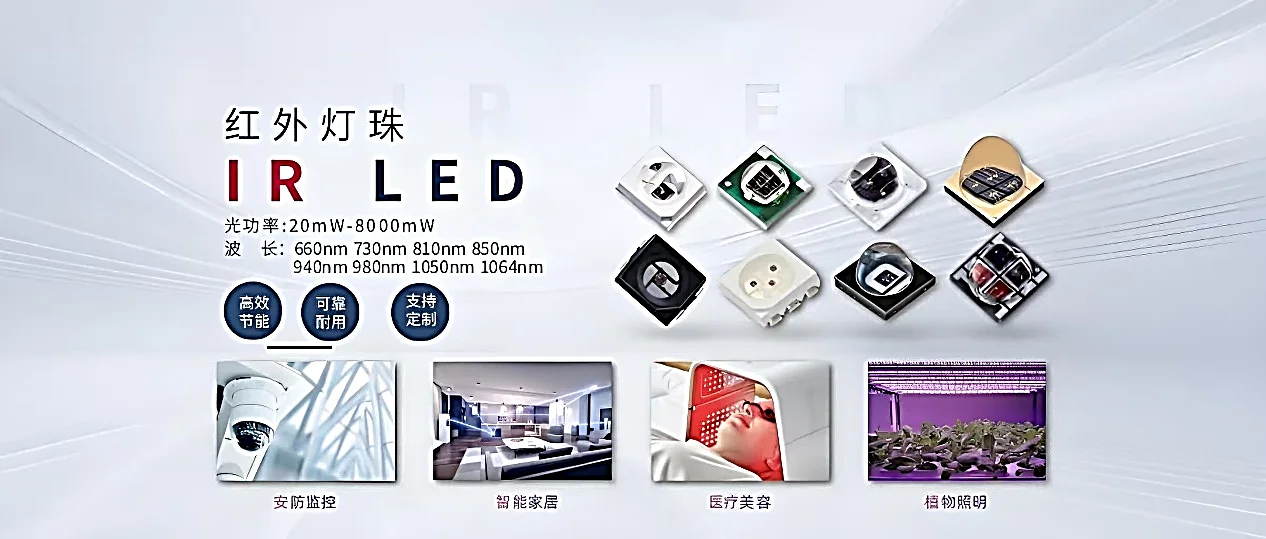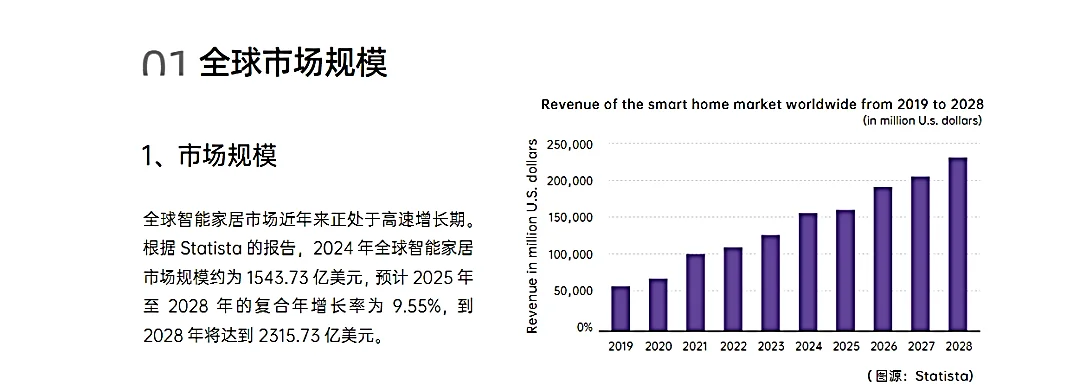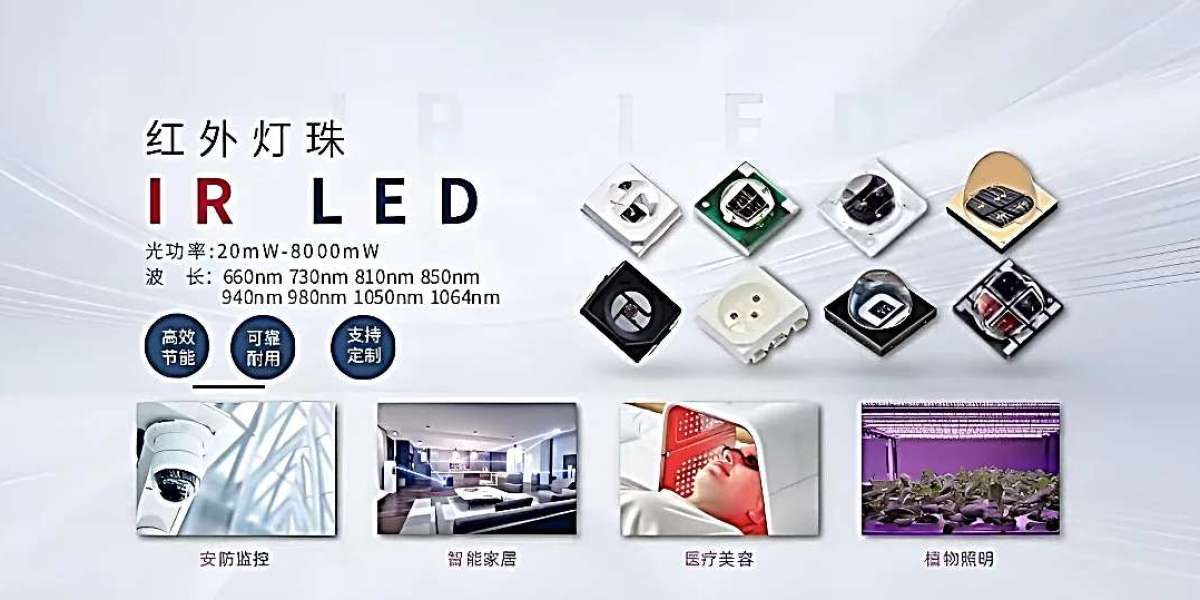With the rapid development of global technology, the smart home industry is rising with a strong momentum, becoming a potential track for going overseas.

According to the "Ark Category Overseas Expansion Report - Smart Home Edition", the global smart home market size was approximately 154.373 billion US dollars in 2024, and it is expected to grow at a compound annual rate of 9.55% from 2025 to 2028, reaching 231.573 billion US dollars by 2028.

01 The United States, China, Europe and Japan are leading the way, and emerging markets are on the rise
The global smart home market has been in a period of rapid growth in recent years. According to a report by Statista, the global smart home market size is expected to be approximately 154.373 billion US dollars in 2024, with a compound annual growth rate of 9.55% from 2025 to 2028, reaching 231.573 billion US dollars by 2028.
The global smart home market is in a period of rapid development, with a compound annual growth rate expected to reach as high as 23.1% from 2025 to 2032. Among them, the advancement of Internet of Things technology, the improvement of consumers' demands for quality of life, and the empowerment of emerging technologies such as AI and 5G are the main driving forces.
From the perspective of segmented markets, smart security devices have grown rapidly, while smart entertainment devices, although holding the largest market share, have seen their proportion decline year by year, from 48.2% in 2018 to 31.3% in 2024.
By region, North America, as a mature market, holds the largest share, with a market size of 49 billion US dollars in 2024. It is expected to have a compound annual growth rate of 10% from 2026 to 2032. The Asia-Pacific region is the fastest-growing area, with a compound annual growth rate as high as 31% from 2025 to 2030. Among them, China, Japan and South Korea are dominant, while India has huge growth potential. Emerging markets such as the Middle East, Africa and South America have also become new growth points due to the increase in demand and disposable income.
In the mainstream market, the United States is the world's largest smart home market. Its scale is expected to reach 44.08 billion US dollars in 2025, with a compound annual growth rate of 9.12% from 2025 to 2030. Smart home appliances are its largest subcategory, and energy management has the fastest growth rate.
China is the world's largest producer of smart home products, the market leader in the Asia-Pacific region and the second-largest consumer market globally. The market size is expected to reach 36.13 billion US dollars in 2025, with a compound annual growth rate of 15.8% from 2025 to 2030. Smart home appliances dominate the market, while smart entertainment and smart lighting are growing at a significant rate.
In the European market, Germany dominates, while the UK is growing rapidly. The main trends are the demand for intelligent security and the integration of AI and voice assistants.
As the world's fourth-largest smart home market, Japan is expected to reach a scale of 11.55 billion US dollars in 2025, with a compound annual growth rate of 14.1% from 2025 to 2030. The scale of smart home appliances is large and growing rapidly. The categories of smart connection control and smart security are experiencing significant growth. Meanwhile, investment in smart city construction will also drive market development.
02 "Robot +" may become the next trend in smart homes
In the current context of the booming global smart home market, profound changes are taking place in consumption trends.
On the one hand, user pain points remain prominent. Issues such as poor compatibility with multiple devices, fragmented systems, unstable Wi-Fi connections, and insufficient after-sales support have seriously affected user experience, leading to extremely low tolerance for product errors among consumers and an increase in return rates, which has hindered further market expansion.
On the other hand, product trends are moving towards whole-house intelligence, "seamless" intelligent interaction, and "robot +". The whole-house smart scenario is gradually replacing single smart products and becoming the first choice for consumers to build a smart home. Devices such as voice central control and smart panels are interconnected across brands through the Matter protocol. AI technology drives devices to upgrade from passive response to active perception, providing users with more humanized services.
Meanwhile, the "seamless" intelligent interaction, through highly integrated information, personalized decision-making and multi-point linkage, enables users to enjoy the convenience of technology while reducing its presence.
In addition, the "robot +" trend is also accelerating. Robot technology is reshaping the traditional form of household appliances. Ai-enabled home service robots can not only complete household chores but also achieve natural language interaction, injecting new vitality into the smart home market.
03 The Breakthrough and Opportunities for Smart Home Products going global
Against the background of the booming global smart home market, going overseas has become a key layout direction for Chinese enterprises.
In online channels, Amazon has become the core position of smart home brand sales by virtue of its strong platform advantages, with outstanding performance in categories such as smart cleaning, control accessories, security, etc., and higher brand concentration and cost-effective products are more popular; Walmart, eBay and TikTok Shop have also become important platforms for smart home overseas by virtue of their respective characteristics, of which Walmart focuses on the expansion of all categories of smart home. Walmart focuses on the expansion of the whole category of smart home, eBay ushered in growth driven by the epidemic, and TikTok Shop became an emerging growth engine with the dividends of social e-commerce.
In terms of offline channels, supermarkets, integrated retailers and brand stores have become an important layout direction for enterprises to enhance brand trust and user experience, and companies such as Stone Technology are expanding their markets through online and offline synergies.
Overseas opportunities and challenges co-exist, China as the world's largest home exporter, with the supply chain advantages, policy support and overseas market demand growth, for the smart home enterprises to go to sea has laid a solid foundation, but also facing supply chain and logistics bottlenecks, brand awareness is insufficient, compliance and regulatory barriers and many other challenges.
In terms of overseas trends, Chinese brands are reshaping the global market pattern through technology, ecology and scenario layout, and AI-enabled smart home products are upgraded from tools to intelligent lifeforms, providing users with a more intelligent and emotional experience, helping enterprises realize the leap from single-product competition to the output of the whole industry chain ecology in overseas markets.
https://www.y-crystaled.net/the-smart-home-market-worth-hundreds-of-billions-has-exploded.html






